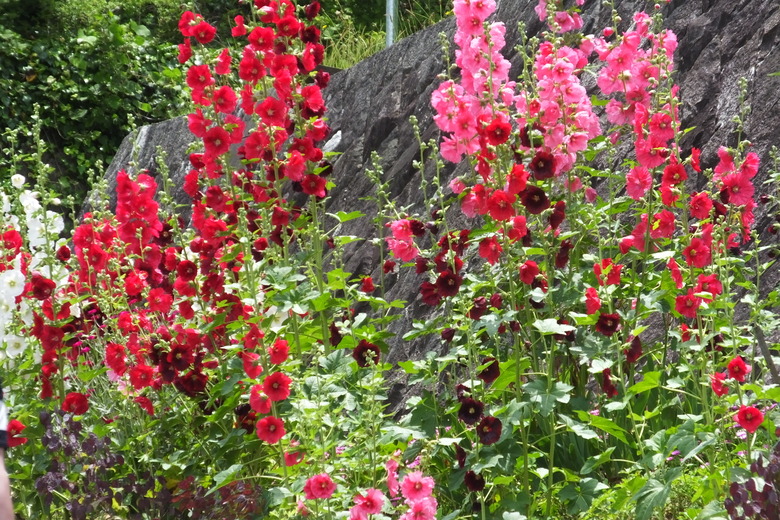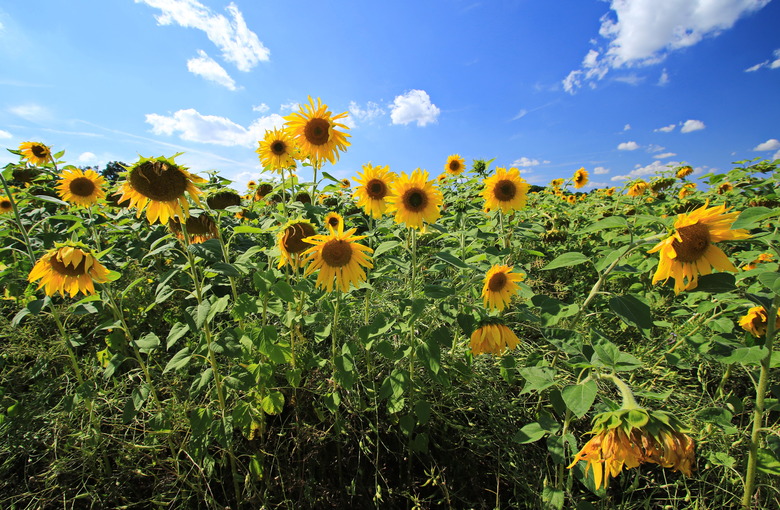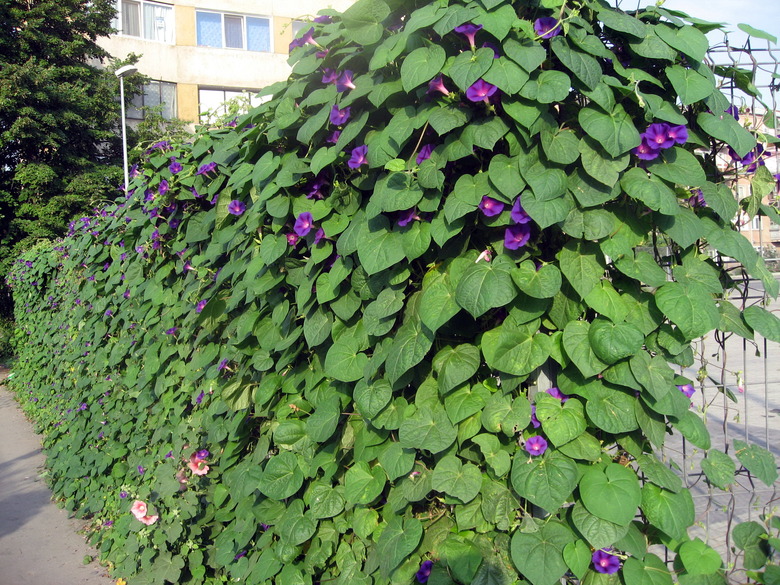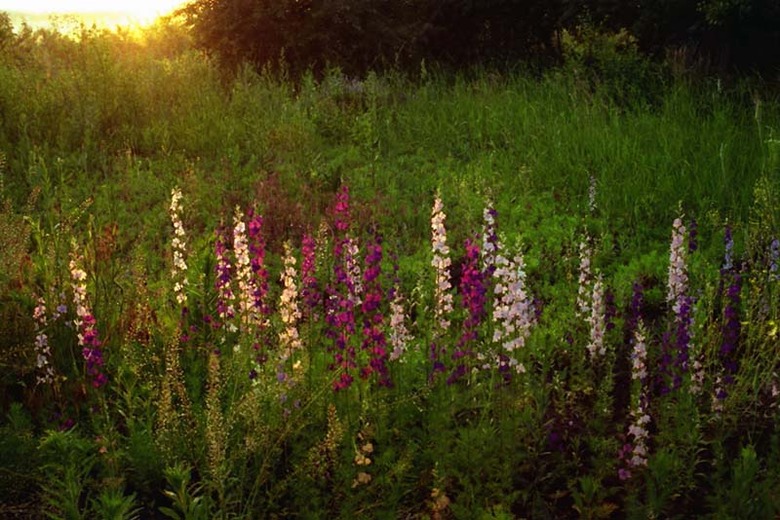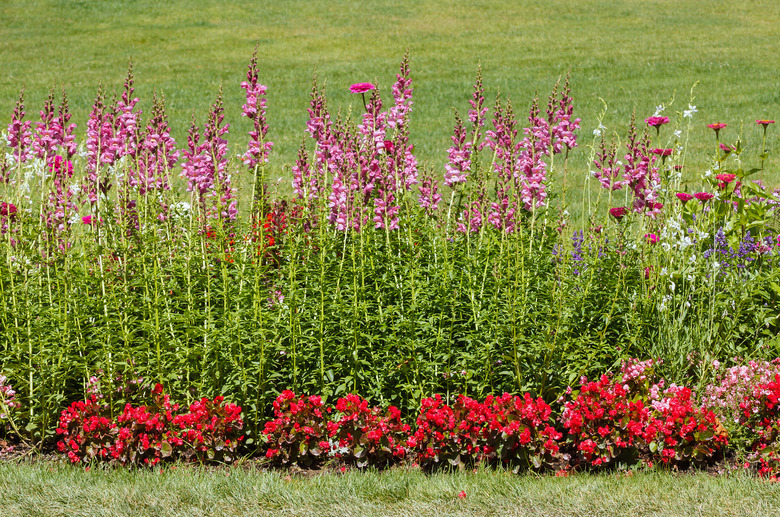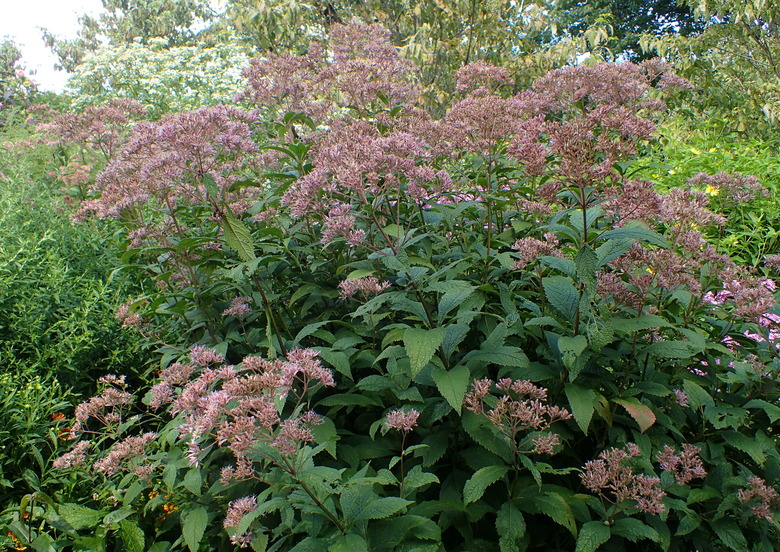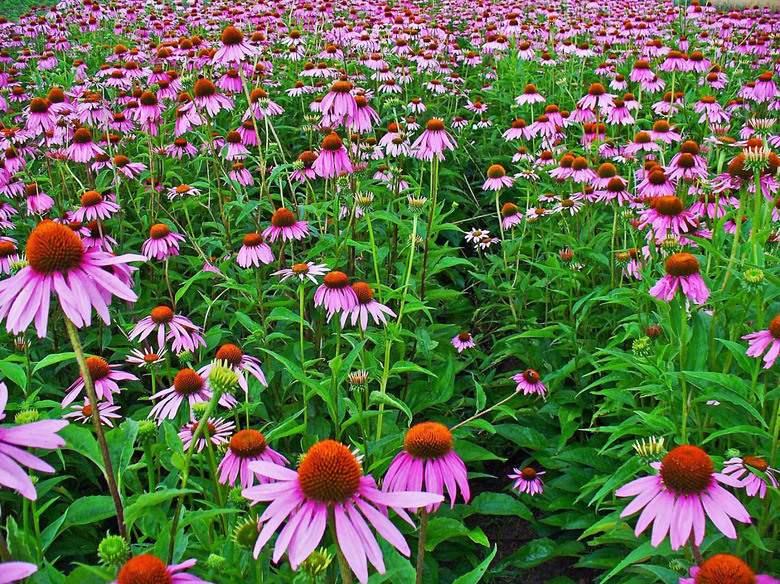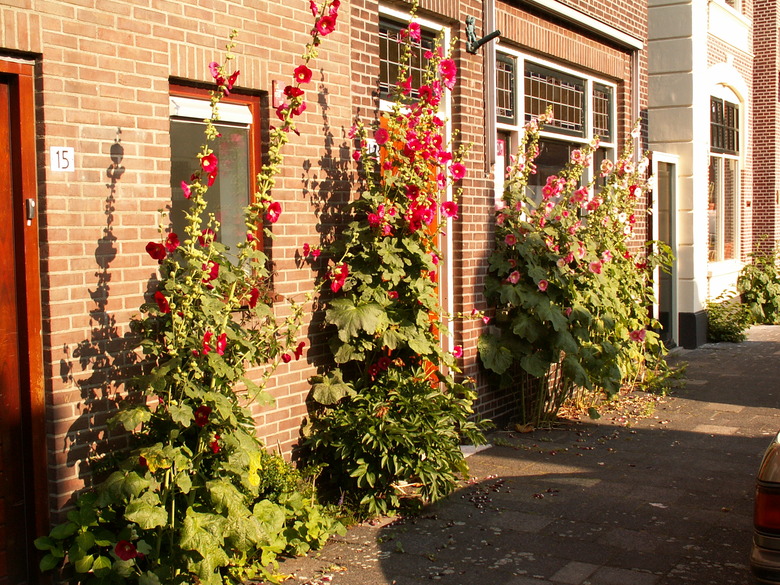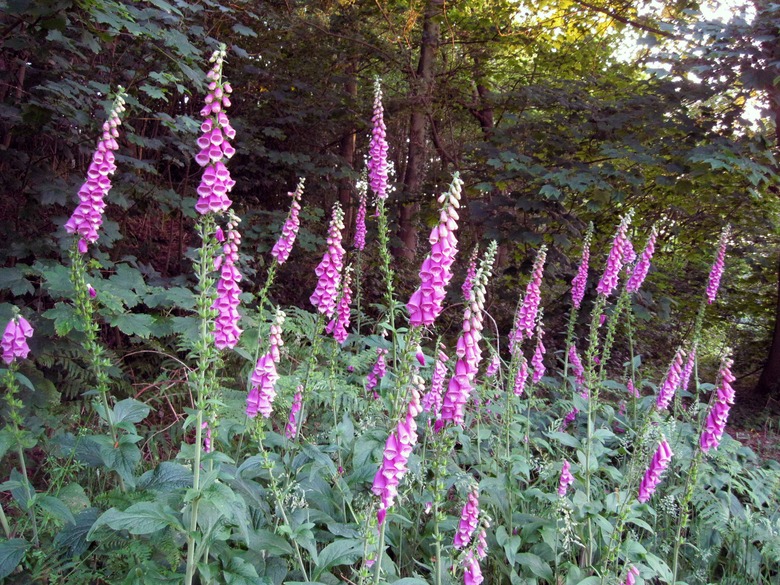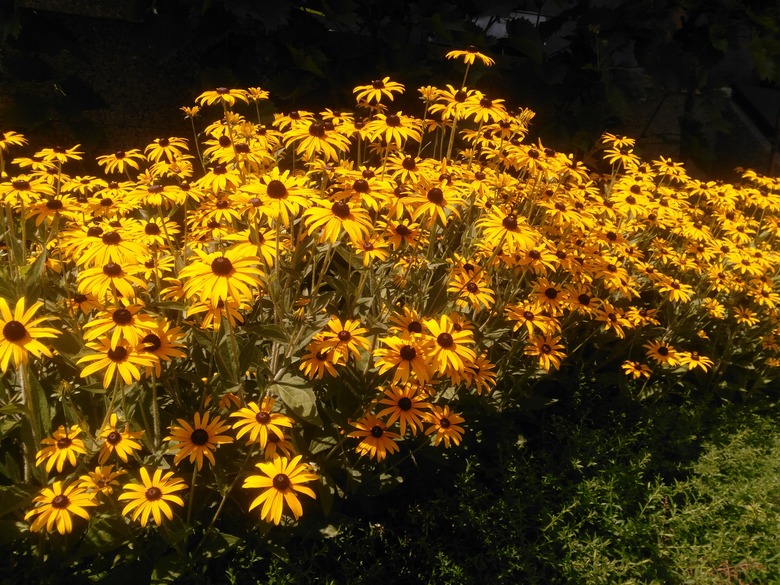A List Of Tall Flowers: Annuals, Perennials And Biennials
Tall, flowering plants with heights of several feet are a great addition to the rear of a garden border. Many also look great planted en masse in flower beds or as specimens.
There are many types of tall flowers in an array of colors. Some are annuals and survive for only one growing season. Others are biennial or perennial, meaning they live for two or more years.
When growing tall flowers, it is important to keep in mind that some of them will need staking to stand upright.
Tall Annual Flowers
Annual plants live for just one growing season, and in theory, they need to be replanted each year. Many annual plants self-seed in the flower garden, however, which means they'll return every year without much effort.
Common Sunflower
Capable of growing up to 10 feet tall, the common sunflower (Helianthus annuus) is an exceptionally tall species of annual flower. The tallest flowers of this species are mammoth cultivars that can reach a whopping 15 feet in height. This species is native to North and Central America.
Morning Glory
Native to Mexico, morning glory (Ipomoea purpurea) is an annual flowering plant that is grown for its funnel-shaped flowers. The species has purple flowers with a white center, though there are cultivars available with pink flowers and red flowers.
This plant can reach a height between 6 and 10 feet. It has naturalized in many parts of the U.S. and can become invasive.
Giant Larkspur
Giant larkspur (Consolida ajacis) is a species of annual flowering plant native to the Mediterranean. It can grow to be up to 4 feet tall, though it usually maxes out between 2 and 3 feet.
This cool-season species produces flower spikes with blue blooms. You'll find cultivars in shades of pink and purple as well as white.
Tall Perennial Flowers
Perennial flowers are those that survive for three or more growing seasons. In cool climates, perennials that are not winter hardy in the region are sometimes grown as annuals.
Snapdragon
The snapdragon (Antirrhinum majus, zones 7 to 10) is a short-lived perennial plant that can reach a height of up to 3 feet. The showy flowers of snapdragon plants are tubular with two lips, creating a silhouette reminiscent of a dragon, hence the common name.
Snapdragons are native to Europe and available in white as well as shades of red, pink, orange, peach, yellow and purple. Some cultivars are bicolored.
Joe Pye Weed
Joe Pye weed (Eutrochium maculatum, zones 4 to 8) is a perennial native to eastern North America that can grow up to 7 feet tall. This species produces purplish-pink flowers in clusters known as inflorescences that bloom in late summer.
Coneflower
Another tall North American perennial flower species is the coneflower (Echinacea purpurea, zones 3 to 8), which can grow up to 5 feet tall and has purple flowers that are like daisies. Also known as the purple coneflower, it blooms from early summer until fall and attracts pollinators.
Tall Biennial Flowers
Biennial flowers are those that live for two growing seasons. They flower in their second year and die shortly afterward. However, due to self-seeding, many of these plants continue to come back each year.
Hollyhocks
While some newer cultivars of hollyhock (Alcea rosea, zones 2 to 10) are short-lived perennials, older types are biennial. The blooms may be red, pink or white and grow on flower spikes that may be up to 8 feet tall. These tall plants are a popular choice for a cottage garden.
Common Foxglove
The common foxglove (Digitalis purpurea, zones 4 to 8) is a biennial species that produces only a rosette of leaves in its first year. In the second year, the plant sends up a flower spire that may be 2 to 4 feet tall and as tall as 5 feet in some cases. Funnel-shaped flowers that may be deep purple or dark pink grow in racemes on one side of the spire.
Black-Eyed Susan
A native biennial wildflower, black-eyed Susan (Rudbeckia hirta, zones 3 to 7) has bright yellow daisy-like flowers with a dark center. This species can reach a height of about 3 feet. It blooms from June to September.
Black-eyed Susans can be grown as low-maintenance annual garden plants if seeds are sown early enough in the spring.
References
- Missouri Botanical Garden: Antirrhinum majus
- Missouri Botanical Garden: Helianthus annuus
- Missouri Botanical Garden: Alcea rosea (single)
- South Dakota State University Extension: Growing Hollyhocks
- Missouri Botanical Garden: Eutrochium maculatum
- North Carolina State Extension: Echinacea purpurea
- Missouri Botanical Garden: Echinacea purpurea
- Missouri Botanical Garden: Ipomoea purpurea
- Missouri Botanical Garden: Consolida ajacis
